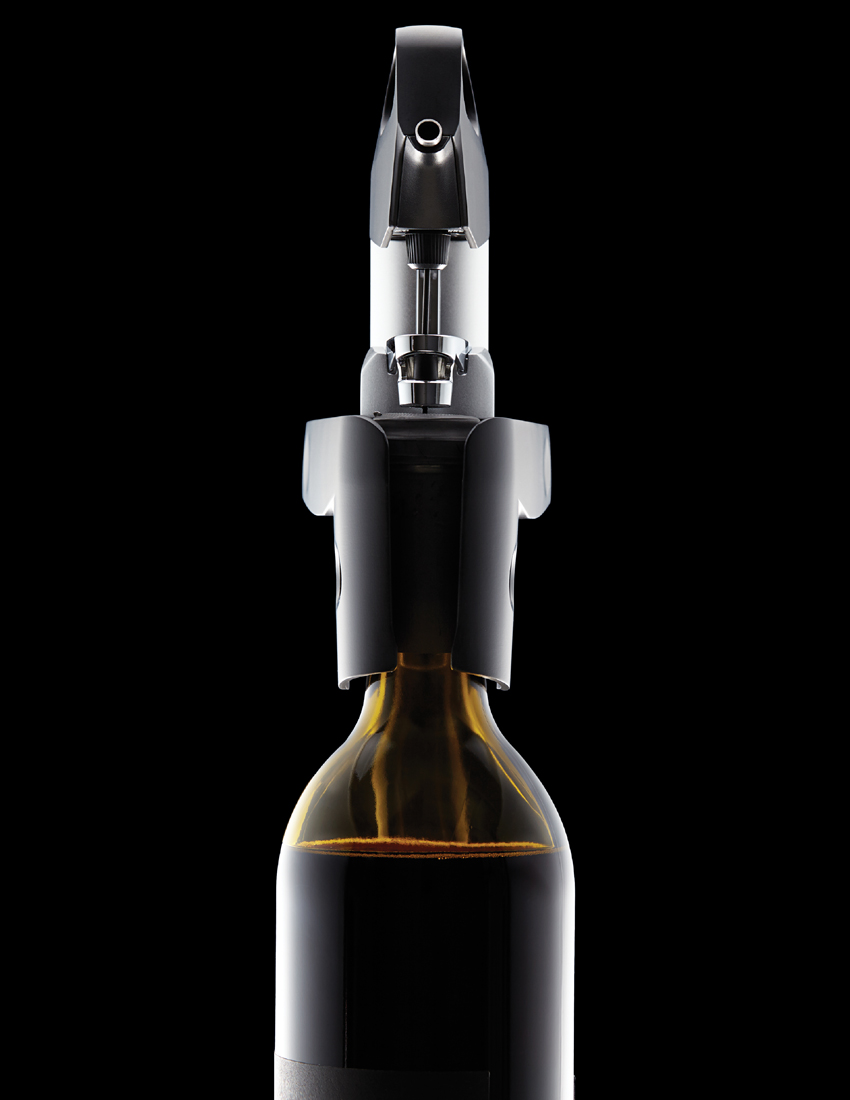Immaculate Consumption: The Coravin Wine-Access System

The Coravin wine-access system. (Photograph by Paul Saraceno. styling by Rowena Day/Ennis)
I have nothing against the wine-preservation industry—those nitrogen-pumping, vacuum-sucking contraptions are techno-visions to behold. And those rubber stoppers? They’re cheap, portable, even cute. Trouble is, when it comes to keeping a bottle of fine wine from oxidizing, none of them work. Oxygen is a genteel Sancerre’s enemy, a brawny Super Tuscan’s kryptonite. Once the cork’s been popped, it’s the oenological equivalent of an oil-tanker spill: You can tidy things up a bit, but the damage is done. To save some for posterity (or for next week) while maintaining quality would require magically removing tonight’s portion without compromising the cork—impossible, right?
Not so fast. Greg Lambrecht, a Woburn medical device inventor, may have discovered that holy grail. While drinking solo one evening back in 1999, he rigged up an L-shaped corkscrew-style contraption (reminiscent of the Rabbit) to extract wine through the cork and seal using a thin, hollow needle and a pressurized gas valve that replaced the tapped vino with a heavy inert gas (eventually argon). Fourteen grueling years of R & D later, the resulting gadget, called Coravin, made its debut this July. The Burlington-based company’s tool could prove to be a boon for restaurants, letting them pour single servings of deep-cellar trophies without sweating to sell through the remainder. The performance has been, in a word, stunning. At a recent tasting, master of wine Sandy Block, of Legal Sea Foods, couldn’t discern a freshly opened 2000 Chateau Fonréaud from one missing two glasses, nabbed 10 years prior (!). The seafood behemoth has begun to use the Coravin at its Hingham location, as have national heavyweights such as Del Posto, in New York. Even home quaffers might deploy the $299 gadget to spot-check cellared cases, or play fickle dinner-party pairer (“Hmm, that’s not quite right”), sans full commitment. And sans detection, meaning parents may want to hide it from enterprising teenagers with access to the wine fridge.


